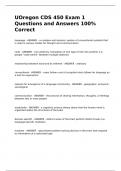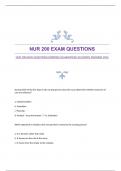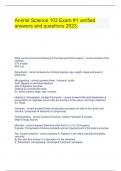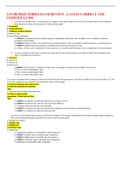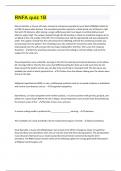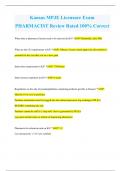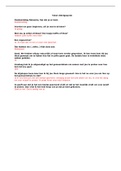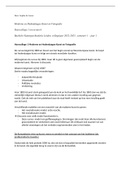Exam (elaborations)
UOregon CDS 450 Exam 1 Questions and Answers 100% Correct
- Course
- Institution
UOregon CDS 450 Exam 1 Questions and Answers 100% CorrectUOregon CDS 450 Exam 1 Questions and Answers 100% CorrectUOregon CDS 450 Exam 1 Questions and Answers 100% CorrectUOregon CDS 450 Exam 1 Questions and Answers 100% Correct language - ANSWER - a complex and dynamic system of conventional symb...
[Show more]
